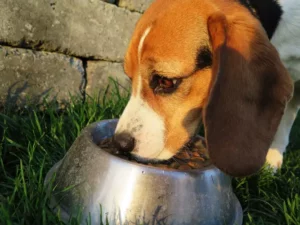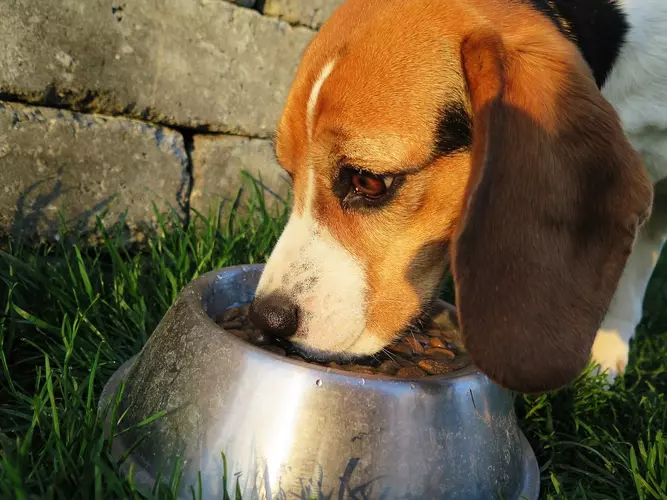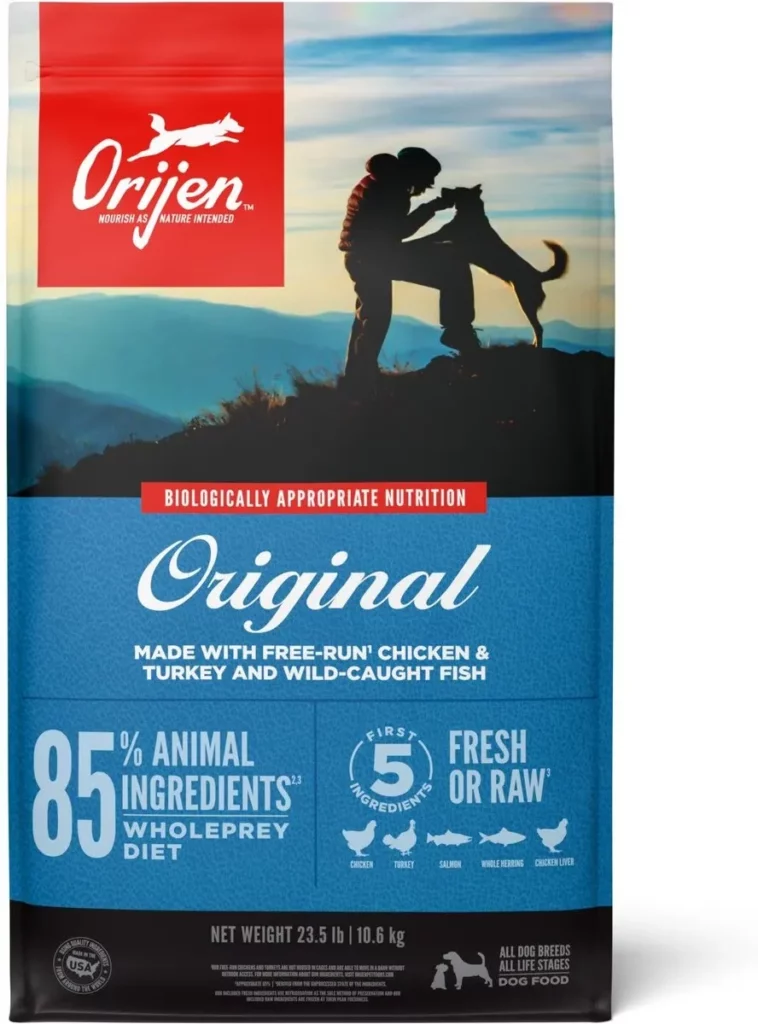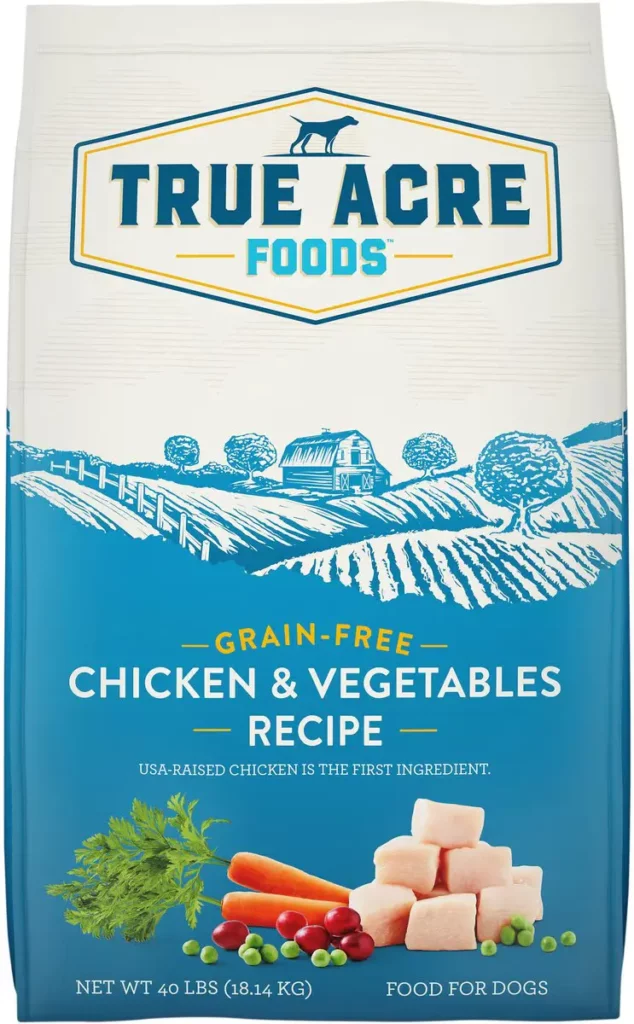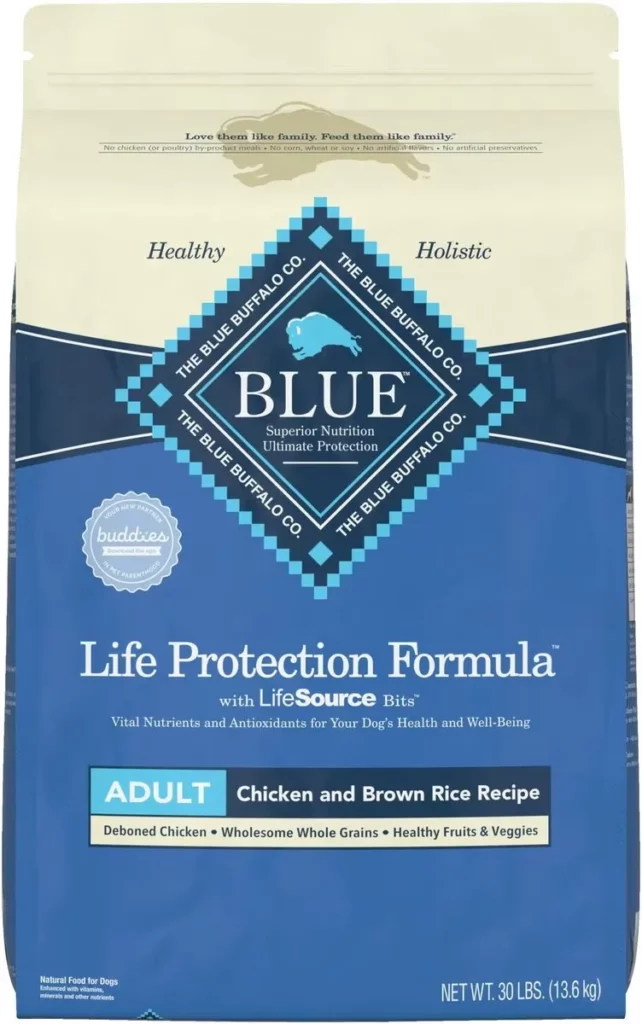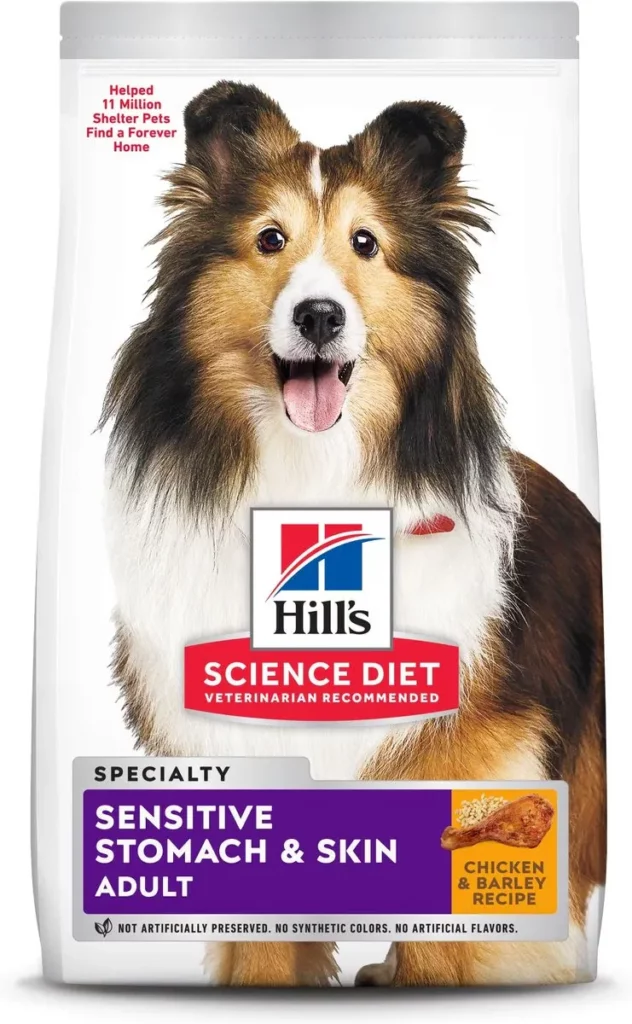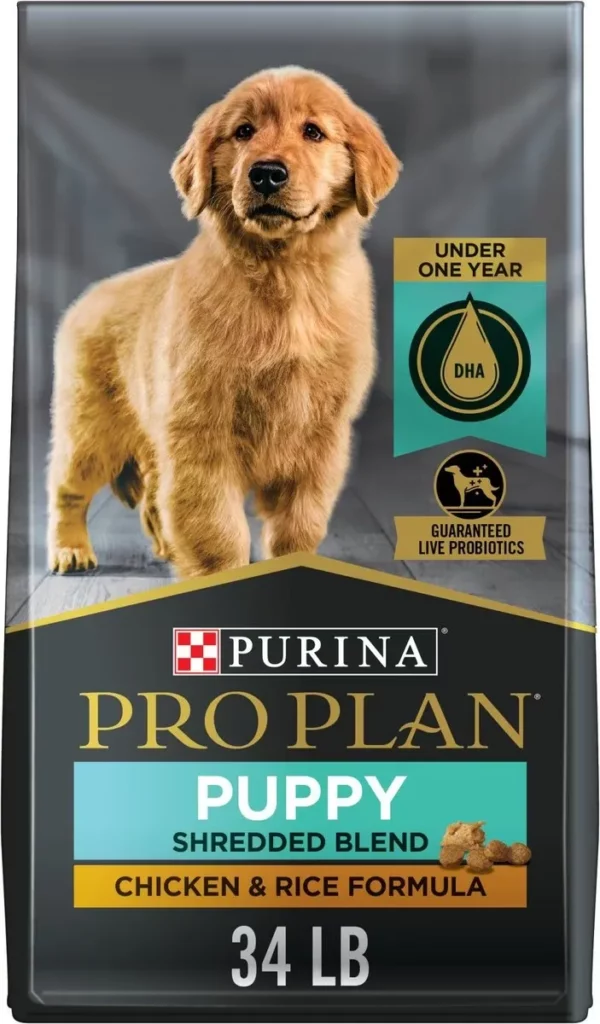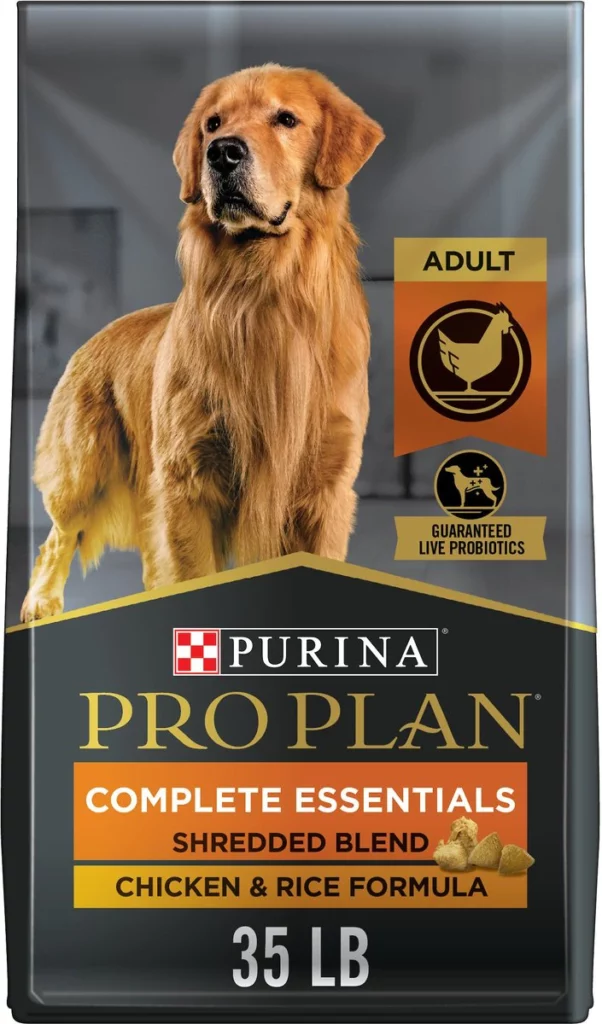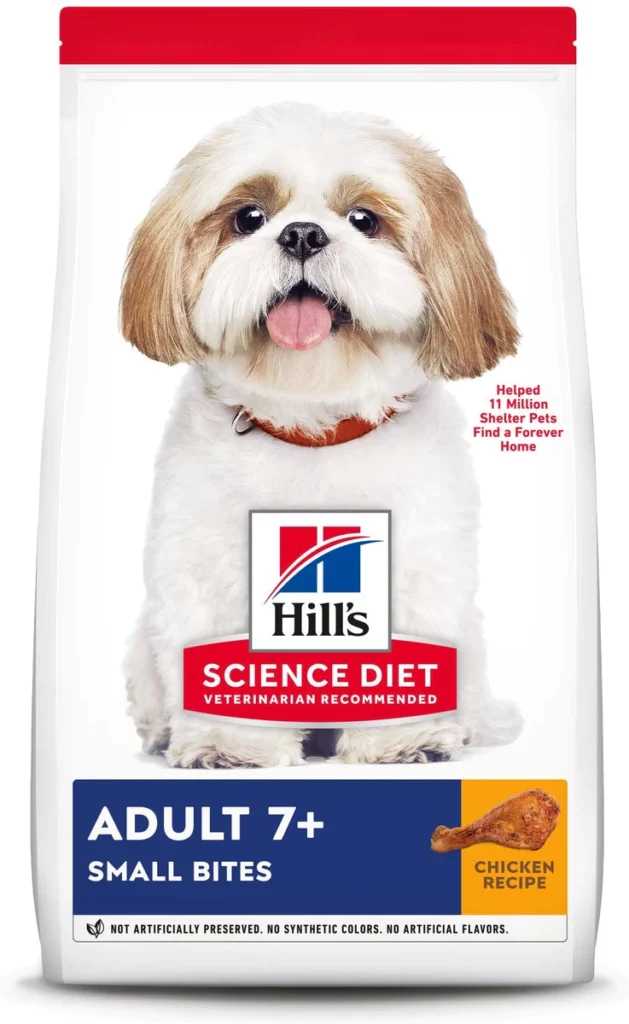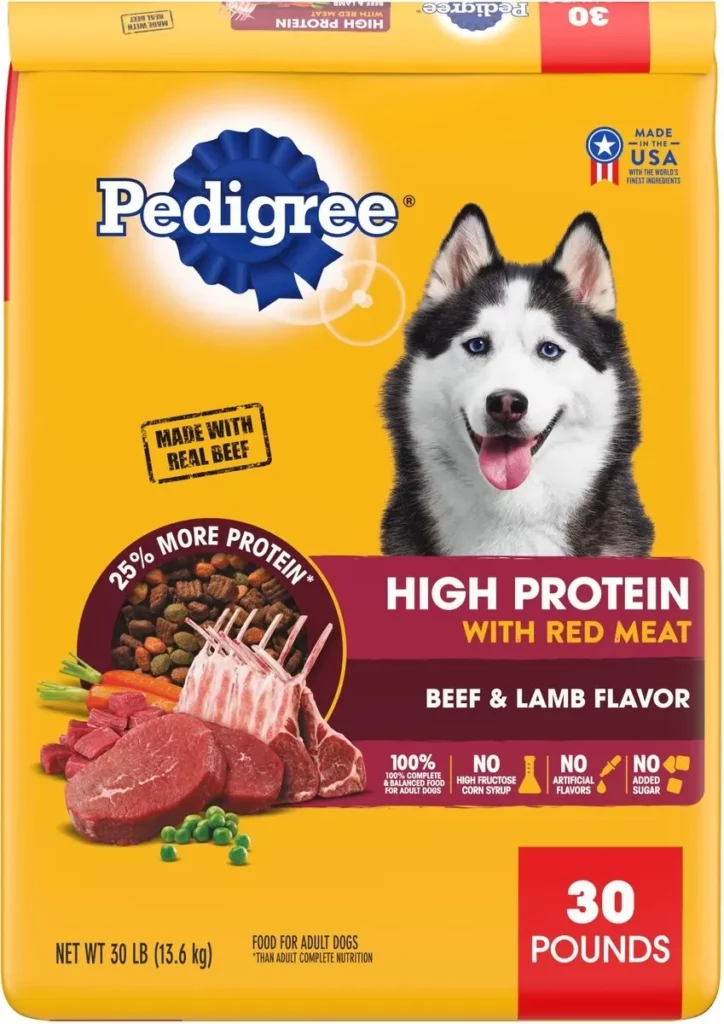In pet care, the ascendancy of dry pet food has marked a significant shift in how we nourish our animal companions.
This evolution in pet sustenance is not merely a trend but a reflection of the growing awareness among pet owners about the convenience and benefits of dry kibble.
Contents
- 1 Top Picks For The Best Dry Fet Food
- 2 1. Premium Food
- 3 2. Grain-Free Dry Dog Food
- 4 3. Dry Dog Food With Grain
- 5 4. Science-Based Dry Dog Food
- 6 5. Dry Dog Food for Puppies
- 7 6. Dry Dog Food for Adult Dogs
- 8 7. Dry Dog Food for Senior Dogs
- 9 8. High-Protein Dry Dog Food
- 10 The Rise of Dry Pet Food in Modern Pet Care
- 11 Choosing the Right Dry Food for Your Pet
- 12 Top Picks for Dry Dog Food
- 13 Top Picks for Dry Cat Food
- 14 Special Dietary Needs and Dry Food
- 15 The Role of Dry Food in Dental Health
- 16 Sustainability and Ethical Considerations
- 17 The Future of Dry Pet Food
- 18 Conclusion:
Top Picks For The Best Dry Fet Food
Selecting the proper dry pet food for your feline friends is crucial for their health and happiness.
Here’s a compressive guide to six popular dry pet food products, According to Experts:
1. Premium Food
ORIJEN Original Dry Dog Food. This grain-free recipe mirrors a dog’s diet, with 85% fresh or raw animal ingredients like chicken, turkey, fish, and organic meats.
It delivers the protein-rich nutrition your canine companion craves to thrive. Antioxidant-rich fruits and vegetables complete the formula for a well-rounded, biologically appropriate diet.
2. Grain-Free Dry Dog Food
Authentic Acre Foods Chicken & Vegetable Recipe prioritizes natural, whole-food ingredients your dog will love.
This recipe features USA-raised chicken as the first ingredient, ensuring a protein-rich foundation for your pup’s energy.
Farm-grown vegetables like peas and carrots add essential vitamins and minerals, while natural flavors deliver an irresistible taste in every bite.
3. Dry Dog Food With Grain
Blue Buffalo Life Protection formula prioritizes your dog’s safety and happiness.
Their recipes start with natural, deboned chicken for a protein-rich foundation, followed by wholesome whole grains, garden vegetables, and fruit.
This nutrient-dense blend provides sustained energy and essential vitamins to keep your furry friend thriving.
4. Science-Based Dry Dog Food
Hill’s ScienHill’st Adult Sensitive Stomach & Skin Chicken Recipe prioritizes gentle digestion for adult dogs.
This formula features prebiotic fiber as a food source for beneficial gut bacteria, promoting a balanced microbiome.
This translates to smoother digestion, easier nutrient absorption, and less tummy trouble for your furry friend.
5. Dry Dog Food for Puppies
Give your precious pup the perfect start with Purina Pro Plan Puppy Shredded Blend Chicken & Rice Formula.
This dry food prioritizes complete and balanced nutrition, ensuring your growing canine gets all the essential nutrients he needs to thrive.
As the first ingredient, real chicken delivers protein for strong muscles, while rice provides a steady energy source to fuel his playful adventures.
6. Dry Dog Food for Adult Dogs
Mealtime becomes a delightful adventure with Purina Pro Plan Shredded Blend Chicken & Rice Formula.
Real chicken is the first ingredient, ensuring a protein-rich foundation for your dog’s vital energy.
High-quality ingredients combine to create a delicious blend your dog will crave.
The exciting texture, featuring a mix of hard kibble and tender shreds, keeps him engaged with every bite.
7. Dry Dog Food for Senior Dogs
Hill’s ScienHill’st Adult 7+ Small Bites goes beyond feeding your senior dog.
This recipe is formulated with precise nutrition to address the specific needs of aging canines.
Healthy ingredients like chicken meal, barley, and rice are balanced to support your dog’s health and well-being.
8. High-Protein Dry Dog Food
Power up playtime with Pedigree High Protein Beef & Lamb Flavor Adult Dry Dog Food.
This protein-rich recipe features natural beef as the first ingredient, providing the building blocks for your dog’s muscular and boundless energy.
Every crunchy bite explodes with the irresistible flavors of beef and lamb, making mealtime a celebration for your furry friend.
The Rise of Dry Pet Food in Modern Pet Care
Dry pet food, often known as kibble, has undergone a remarkable journey to become a staple in pet parents’ pantries.
Its storability and ease of use have propelled it to the forefront of pet nutrition. Here’s a gliHere’snto its trajectory:
- Early Beginnings: Tracing back to the first commercial pet foods
- Technological Advancements: How extrusion and preservation techniques revolutionized kibble
- Consumer Shifts: The move towards premiumization and specialized diets
Understanding the Nutritional Value of Dry Food for Pets
Regarding our furry friends, the nutritional content of their diets is at the center stage.
Dry pet food can be a powerhouse of nutrients if chosen correctly. Let’s delve into the nutritional framework:
- Macronutrient Balance: The critical balance of proteins, fats, and carbohydrates
- Vitamins and Minerals: Essential micronutrients for holistic pet health
- Unique Ingredients: The inclusion of superfoods and novel proteins in modern formulas
| Brand | Protein (%) | Fat (%) | Fiber (%) | Special Ingredients |
|---|---|---|---|---|
| Brand A | 30 | 15 | 5 | Omega-3, Pumpkin Seeds |
| Brand B | 28 | 12 | 4 | Blueberries, Sweet Potato |
| Brand C | 32 | 14 | 3.5 | Probiotics, Flaxseed |
“The right dry pet food can contribute significantly to your pet’s health, longevity, and overall happiness.”
By understanding dry pet food’s nutritional value, pet owners can make informed decisions that align with their pets’ specific needs, ensuring a happy, healthy, and active lifestyle for their beloved companions.
Choosing the Right Dry Food for Your Pet
Selecting the ideal dry food for your pet is a pivotal decision that can have far-reaching implications on their health and vitality.
This section will elucidate the intricacies of pet food labels, the significance of meat content, and the ongoing debate between grain-free and grain-inclusive diets.
Deciphering Pet Food Labels: What You Need to Know
Pet food labels are a tapestry of nutritional information, regulatory compliance, and marketing. To navigate this labyrinth:
- Ingredient List: Ingredients are listed by weight; look for high-quality protein sources at the top.
- Guaranteed Analysis: This provides the minimum or maximum nutrients such as protein, fat, fiber, and moisture.
- Nutritional Adequacy Statement: Indicates if the food is complete and balanced for a particular life stage.
| Component | Description |
|---|---|
| Crude Protein | Minimum percentage of protein |
| Crude Fat | Minimum percentage of fat |
| Crude Fiber | Maximum percentage of fiber |
| Moisture | Maximum percentage of moisture |
| Ash | Residual inorganic material |
The Importance of Meat Content in Dry Pet Food
Meat content in pet food is not just a luxury; it’s a necessity. Carnivorous companions thrive on diets rich in animal proteins because:
- Biological Requirement: Dogs and cats require abundant amino acids in meat.
- Muscle Maintenance: High-quality meat helps maintain lean muscle mass.
- Palatability: Meat enhances the flavor, making the food more appealing to pets.
Grain-Free vs. Grain-Inclusive: Which is Better for Your Pet?
The grain-free versus grain-inclusive debate is a hot topic among pet nutritionists. Here’s what Here’ssider:
- Grain-Free Diets: Often chosen for pets with allergies, though recent studies suggest a link with certain heart conditions.
- Grain-Inclusive Diets: These can provide necessary nutrients and are typically more cost-effective.
“The best diet for your pet is one that meets their unique nutritional needs, which may or may not include grains.”
The quest for the best dry pet food involves understanding labels, recognizing the importance of high-quality meat, and choosing between grain-free and grain-inclusive options based on your pet’s needs.
Top Picks for Dry Dog Food
When it comes to the health and happiness of our canine companions, the choice of diet is paramount. This guide will illuminate the top dry dog food options tailored to meet the diverse needs of dogs at various life stages and activity levels.
High-Protein Options for Active Dogs
A high-protein diet is not just beneficial; it’s essential for the energetic pup with boundless energy.
These robust formulas support muscle development and sustain their exuberant lifestyle.
- Elevated Protein Levels: Look for foods with a higher percentage of protein from accurate meat sources.
- Endurance Support: Ingredients that aid in long-lasting energy for active dogs.
- Muscle Recovery: Nutrients that help repair and build muscle tissue post-exercise.
High-Protein Dry Dog Food Comparison
| Brand | Protein Content | Main Protein Source | Special Additions |
|---|---|---|---|
| Brand X | 34% | Chicken | Glucosamine |
| Brand Y | 32% | Salmon | Antioxidant Blend |
| Brand Z | 30% | Beef | Probiotic Mix |
Best Dry Food for Small Breeds
Small breed dogs have unique dietary requirements that necessitate specially formulated food. These selections cater to their faster metabolisms and smaller mouths.
- Caloric Density: Nutrient-rich to meet the high energy demands of smaller dogs.
- Bite-Size Kibble: Smaller kibble pieces for easier consumption and digestion.
- Tailored Nutrition: Enhanced with nutrients specific to minor breed health concerns.
Optimal Choices for Senior Dogs
As dogs age, their nutritional needs evolve. Senior dog food options focus on supporting their changing bodies and maintaining their quality of life.
- Joint Health: Ingredients like chondroitin and glucosamine to support joint mobility.
- Digestive Wellness: Easily digestible proteins and fibers to aid in gastrointestinal health.
- Cognitive Support: Supplements such as omega-3 fatty acids to nourish the aging brain.
Budget-Friendly Dry Dog Foods That Don’t ComproDon’ton Quality
Quality nutrition doesn’t have the bank.
These budget-friendly options provide excellent nutritional value without the premium price tag.
- Cost-Effective Nutrition: Balancing quality ingredients with affordability.
- No Fillers: Foods that avoid unnecessary fillers to maintain nutritional integrity.
- Value Brands: Identifying brands that offer the best bang for your buck.
“Even on a budget, it’s possible to provide your dog with a nutritious and satisfying meal that caters to their specific needs.”
By considering these top picks for dry dog food, pet owners can ensure their furry friends receive the nourishment they need to thrive at every stage of life.
Whether it’s a Sprigit puppy or a senior, another option suits every dog.
Top Picks for Dry Cat Food
The quest for the quintessential dry cat food is a journey of nutritional discovery and feline well-being.
This segment will spotlight the crème de la crème of dry cat food selections, tailored to the nuanced dietary requisites of our feline friends.
Premium Dry Foods for Indoor Cats
Indoor cats lead a life of leisure and repose, necessitating a diet calibrated to their less active lifestyle.
Premium dry foods for indoor cats are formulated to satiate their palates while maintaining their svelte figure.
- Caloric Moderation: Ensuring a balanced caloric intake to prevent weight gain.
- Hairball Control: Ingredients that aid in reducing hairball formation.
- Fiber Rich: Aiding in digestion and satiety with an optimal fiber blend.
Premium Dry Food Options for Indoor Cats
| Brand | Caloric Content | Hairball Control | Fiber Content | Special Nutrients |
|---|---|---|---|---|
| Purrfect Health | Moderate | Yes | High | Taurine, Vitamin E |
| Feline Fine | Low | Advanced | Moderate | Omega-6, Zinc |
| Indoor Delight | Balanced | Yes | High | Antioxidants |
The Best Dry Kitten Foods for Growth and Development
Kittens are bundles of dynamism and growth, requiring a diet rich in proteins and fats to fuel their developmental needs.
- High-Quality Protein: Building blocks for muscle and tissue growth.
- DHA: Omega-3 fatty acid is crucial for brain and vision development.
- Balanced Minerals: For healthy bone and tooth formation.
Dry Foods for Weight Management in Cats
Weight management is a critical component of feline health. These dry food options are designed to help cats achieve and maintain a healthy weight without sacrificing nutrition.
- Lean Proteins: High-quality proteins with lower fat content.
- L-Carnitine: An amino acid that supports metabolism and fat burning.
- Portion Control: Guidelines to help owners feed the right amount.
Natural and Organic Dry Food Options for Cats
For the eco-conscious pet parent, natural and organic dry foods offer a fusion of wholesome nutrition and ethical peace of mind.
- Certified Organic Ingredients: Free from pesticides and artificial additives.
- Whole Foods: Utilizing whole meats, vegetables, and grains.
- Sustainability: Brands committed to ecological and social responsibility.
“Feeding your cat a natural and organic diet is a step towards a more sustainable and healthy lifestyle for your beloved pet.”
By exploring these top picks for dry cat food, pet owners can provide their feline companions with a diet that tantalizes their taste buds and supports their health, growth, and environmental ethos.
Whether it’s a kitten or a laid-back indoor cat, there’s an option to suit every cat’s lifestyle.

Special Dietary Needs and Dry Food
Navigating the dietary landscape for pets with special needs can be daunting.
This section is dedicated to shedding light on the best dry food options for pets with allergies, sensitive stomachs, and specific health conditions.
Hypoallergenic Dry Food for Pets with Allergies
Allergies in pets can manifest in myriad ways, often leading to discomfort and distress.
Hypoallergenic dry foods are crafted to exclude common allergens, providing relief and nourishment.
- Novel Protein Sources: Utilizing proteins that pets are less likely to be allergic to, such as venison or duck.
- Limited Ingredient Diets: Simplifying the ingredient list to minimize the risk of allergic reactions.
- Skin and Coat Support: Enhanced with fatty acids to support skin health and reduce irritation.
Hypoallergenic Dry Food Brands Comparison
| Brand | Protein Source | Grain-Free | Omega Fatty Acids |
|---|---|---|---|
| Aller-Free Feast | Kangaroo | Yes | High |
| Gentle Balance | Duck | Optional | Moderate |
| Pure Harmony | Rabbit | Yes | High |
Dry Food Formulas for Pets with Sensitive Stomachs
Sensitive stomachs require gentle yet nutritious food options. These formulas are designed to be easily digestible while providing all the necessary nutrients.
- Digestive Enzymes: These aid in breaking down food and absorbing nutrients.
- Prebiotics and Probiotics: To maintain a healthy gut flora balance.
- Highly Digestible Proteins: To ensure easy digestion and nutrient absorption.
Managing Pet Health Conditions with Prescription Dry Food
Prescription dry foods are tailored to address specific health conditions, providing therapeutic benefits alongside basic nutrition.
- Renal Health: Formulated to support kidney function with controlled phosphorus levels.
- Diabetic Support: Low-glycemic index ingredients to help manage blood sugar levels.
- Cardiac Care: Adjusted levels of sodium and taurine to support heart health.
“Prescription diets are a critical component of managing chronic health conditions in pets, often used in conjunction with other treatments.”
By considering these specialized dry food options, pet owners can ensure their companions with particular dietary needs receive the care and nutrition they require for a thriving life.
Whether it’s a sensitive stomach or a chronic health condition, there’s a solution for every pet.
The Role of Dry Food in Dental Health
The nexus between dry pet food and dental health is often overlooked, yet it plays a pivotal role in the overall well-being of our pets.
This section delves into how dry food can be instrumental in preventing dental diseases and how it can be effectively complemented with chews and treats for optimal dental health.
How Dry Food Can Help Prevent Dental Diseases in Pets
Dry food’s textufood’s consistency is conducive to reducing plaque and tartar buildup on teeth. The mechanical action of chewing dry kibble helps to:
- Scrape Away Plaque: The abrasive surface of dry food pellets can act as a natural toothbrush.
- Stimulate Gums: Chewing promotes blood circulation in the gums, fortifying them against disease.
- Reduce Tartar Formation: Regular dry food consumption can slow down plaque calcification into tartar.
Dental Benefits of Popular Dry Pet Foods
| Brand | Dental Benefits | Active Ingredients | Texture |
|---|---|---|---|
| DentalCare+ | Plaque Reduction | Enzymes | Crunchy |
| BiteClean | Tartar Control | Sodium Hexametaphosphate | Porous |
| GumGuard | Gum Health | Vitamin C | Firm |
Chews and Treats: Complementing Dry Food for Dental Health
While dry food is a foundational element for dental care, chews, and treats offer a supplementary approach to maintaining dental hygiene.
- Dental Chews: Specifically designed to clean teeth and freshen breath while providing a satisfying chew experience.
- Functional Treats: Often fortified with ingredients that support dental health, such as green tea extract or parsley.
- Rawhide Alternatives: Safer, digestible options that still provide the benefits of prolonged chewing.
“A comprehensive dental health regimen for pets should include both high-quality dry food and specialized chews and treats.”
Incorporating these items into your pet’s diet contributes significantly to their dental health, potentially preventing the onset of dental disease and ensuring a happy, healthy mouth for years to come.
Whether through the daily crunch of kibble or the occasional dental treat, proactive dental care is a gift of health to our pets.
Sustainability and Ethical Considerations
In the burgeoning pet food market, sustainability, and ethical sourcing are bastions of conscientious consumerism.
This section explores brands pioneering environmentally friendly practices and delves into the complexities of ethical ingredient sourcing.
Environmentally Friendly Dry Pet Food Brands
The eco-conscious pet owner seeks brands that align with their values of environmental stewardship. These brands distinguish themselves through the following:
- Sustainable Manufacturing: Employing renewable energy and waste reduction techniques.
- Recyclable Packaging: Commitment to using materials that reduce landfill contributions.
- Conservation Partnerships: Collaborating with organizations to protect natural habitats.
Eco-Friendly Pet Food Brands and Their Practices
| Brand | Renewable Energy Usage | Packaging | Conservation Initiatives |
|---|---|---|---|
| EcoPaws | 100% | Biodegradable | Coral Reef Restoration |
| GreenBites | Solar | Recycled | Rainforest Alliance |
| Nature’s Harmony | Wind | Compostable | Wildlife Conservation |
Understanding Ethical Sourcing in Pet Food Ingredients
Ethical sourcing transcends the mere acquisition of ingredients; it embodies a philosophy of fairness, transparency, and responsibility throughout the supply chain.
- Traceable Sources: Ensuring ingredients can be traced back to their origins.
- Fair Trade Practices: Supporting equitable trade conditions for farmers and workers.
- Animal Welfare: Prioritizing the humane treatment of animals used in pet food production.
“Choosing a pet food brand that practices ethical sourcing is not just about nutrition; it’s about contributing to a more just and humane world.” – Conscious Pet Owners Quarterly
By embracing brands prioritizing sustainability and ethical sourcing, pet owners can profoundly impact the environment and society while providing their furry friends with nutritious and wholesome meals.
It’s a step Toward a future where pet and planetary care go hand in hand.
The Future of Dry Pet Food
The trajectory of dry pet food is a testament to innovation and adaptation. As we gaze into the horizon of pet nutrition, we see a landscape ripe with advancements and trends that promise to redefine what we feed our four-legged family members.
Innovations in Dry Pet Food Manufacturing
The alchemy of creating dry pet food is evolving, with new technologies fostering leaps in quality and nutrition.
- Precision Nutrition: Tailoring food to the genetic makeup and lifestyle of pets.
- Sustainable Proteins: Incorporating insect-based and lab-grown meats to reduce environmental impact.
- Enhanced Safety Protocols: Advanced sterilization techniques to ensure food safety without compromising nutrient integrity.
Innovative Manufacturing Techniques in Dry Pet Food
| Innovation | Description | Impact on Nutrition |
|---|---|---|
| Cold-Pressing | Retains more nutrients compared to extrusion | Higher nutrient preservation |
| 3D Food Printing | Custom shapes and textures for specific dietary needs | Personalized Nutrition |
| Nanotechnology | Precise nutrient delivery and absorption | Improved health outcomes |
Trends to Watch in the Dry Pet Food Market
The market for dry pet food is growing and diverse, with trends catering to the discerning pet owner.
- Customization: Personalized food blends based on pet profiles and health goals.
- Functional Ingredients: Superfoods and adaptogens are making their way into pet diets.
- Direct-to-Consumer Models: Subscription services offering convenience and customization.
“The future of pet food is personalization, sustainability, and technology-driven nutrition.” – Pet Nutrition Innovator
As we look forward, the dry pet food industry is set to continue its trajectory of growth and innovation, ensuring our pets are well-fed, healthy, and happy.
Advances in manufacturing and market trends highlight a future where pets’ well-being is at the forefront, promising a new era of pet nutrition.
Conclusion:
As we culminate our exploration of the best dry pet food options, it’s imperative to encapsulate the insights gleaned and the wisdom imparted.
This final chapter is dedicated to distilling the essence of our findings and guiding you toward a discerning selection for your cherished companion.
Throughout this odyssey of nutritional discovery, we’ve discovered a treasure trove of premium choices that cater to our pets’ diverse and physiological needs.
Here’s a sucHere’srecapitulation:
- For the Spirited Canine: High-protein formulas that fuel the zestful lives of our active dogs.
- For the Diminutive Breeds: Specially crafted kibbles that cater to the metabolic idiosyncrasies of smaller dogs.
- For the Venerable Companions: Senior-specific offerings that cherish and nurture through their golden years.
- For the Feline Connoisseurs: A selection of sublime dry foods that satisfy the most discerning feline tastes, from the indoor lounger to the vivacious kitten.
Final Thoughts
Choosing the optimal dry food for your pet is a testament to your commitment to their health and happiness.
It’s a decision that intertwines knowledge with care and science with love. Consider these final musings:
- Nutritional Adequacy: Ensure the food meets the AAFCO guidelines for a complete and balanced diet.
- Life Stage Appropriateness: Align your choice with your pet’s age, appetite level, and health status.
- Ingredient Quality: Opt for foods with whole proteins, wholesome grains (if appropriate), and beneficial supplements.
“In the end, the best dry pet food is the one that supports your pet’s health and brings joy to their mealtime.”
In the great tapestry of pet care, every thread of decision we weave contributes to the vitality and spirit of our furry friends.
May your choice of dry pet food be a harmonious note in the symphony of your pet’s well-being. Bon appétit!
